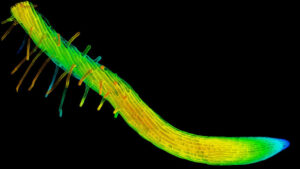
In a groundbreaking study, researchers have unveiled a genetic roadmap that sheds new light on the intricate connections between obesity and type 2 diabetes. The study, conducted by a team at Mass General Brigham, highlights how RNA within extracellular vesicles (EVs) can offer critical insights into metabolic phenotypes associated with obesity. These findings, published in Cell Genomics, promise to revolutionize diagnostic and therapeutic strategies for obesity-related diseases.
The research team, led by experts including Dr. Ravi Shah and Dr. Eric Gamazon from Vanderbilt University Medical Center, utilized advanced functional genomics approaches to analyze the RNA cargo within EVs. They discovered a significant representation of genes and regulatory elements linked to obesity and type 2 diabetes, providing a new perspective on the metabolic phenotypes such as body mass index and diabetes.
Understanding the Genetic Landscape
The study aimed to explore the differences in the circulating EV landscape between obese and lean individuals. By focusing on how EV RNA cargo varies, the researchers sought to integrate these findings with large population-based genetic and transcriptomic databases, offering a deeper understanding of obesity biology.
To achieve this, the team optimized methods for culturing adipose tissue explants from bariatric surgery patients, allowing for the harvesting and isolation of circulating EVs. The integration of EV transcriptomics with population ‘omics’ involved genome-wide, transcriptome-wide, and phenome-wide association studies.
Key Findings and Implications
The findings revealed that the differences in EV-RNA in obesity are primarily driven by EVs released from adipose tissues. Notably, the RNAs within these EVs originate from various cell types within adipose tissue. The study identified 282 transcripts, corresponding to 277 unique gene symbols, that are differentially expressed in circulating EVs between lean and obese individuals.
“Our study outlines a method to integrate EV transcriptomics with large scale genetic studies. It also demonstrates that EV-RNAs, which are differentially expressed in obesity, are linked with genes associated with metabolic phenotypes, such as obesity and type 2 diabetes,” the researchers noted.
The implications of these findings are profound. By mapping the EV transcriptome, the study provides a framework for developing novel diagnostic and therapeutic strategies. This could significantly enhance the ability to predict, prevent, and treat obesity-related diseases.
Future Directions and Potential Impact
Looking ahead, the research team is investigating how these EV transcripts change with weight loss, whether induced by surgery or drugs like GLP-1 agonists. They are also exploring how adipose EVs communicate with other cells, such as cardiac, liver, and brain cells, to mediate obesity-related comorbidities.
This functional genomics study has identified potential targets that may be used to treat some of these conditions. The research represents a significant step forward in understanding the genetic underpinnings of obesity and its related diseases.
Collaborative Efforts and Funding
The study was a collaborative effort, with contributions from numerous researchers at Mass General Brigham, including Guoping Li, Marta Garcia-Contreras, and Priyanka Gokulnath, among others. The research was supported by grants from the American Heart Association, the National Institutes of Health, and several other prestigious institutions.
Dr. Ravi Shah, a key contributor to the study, is supported by grants from the National Institutes of Health and holds equity in Thryv Therapeutics. Dr. Eric Gamazon, another pivotal figure in the research, is also a consultant for Thryv and holds patents related to cardiometabolic health.
As the study progresses, the potential for developing new treatments and interventions for obesity-related diseases becomes increasingly promising. The integration of EV transcriptomics with genetic approaches marks a new era in the fight against obesity and its complications.






